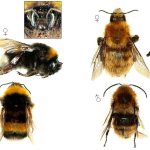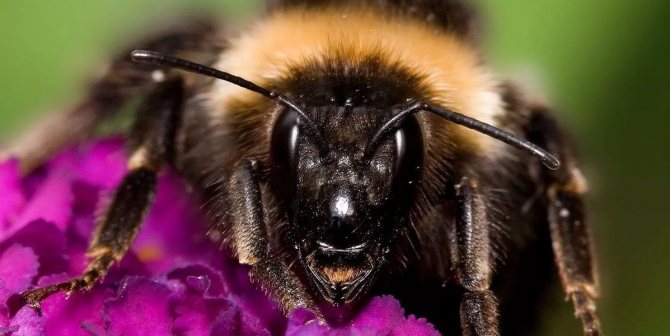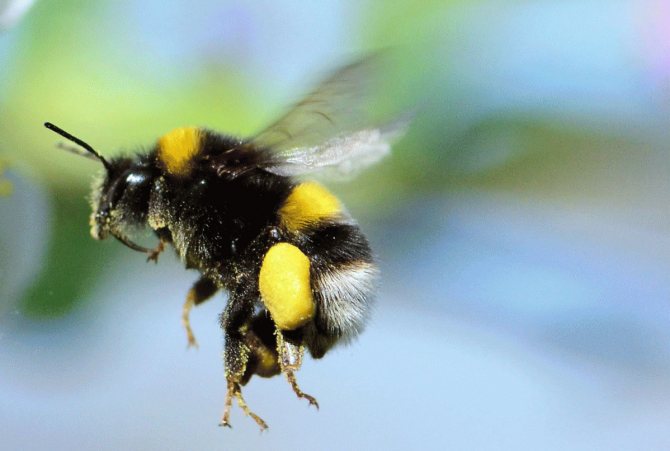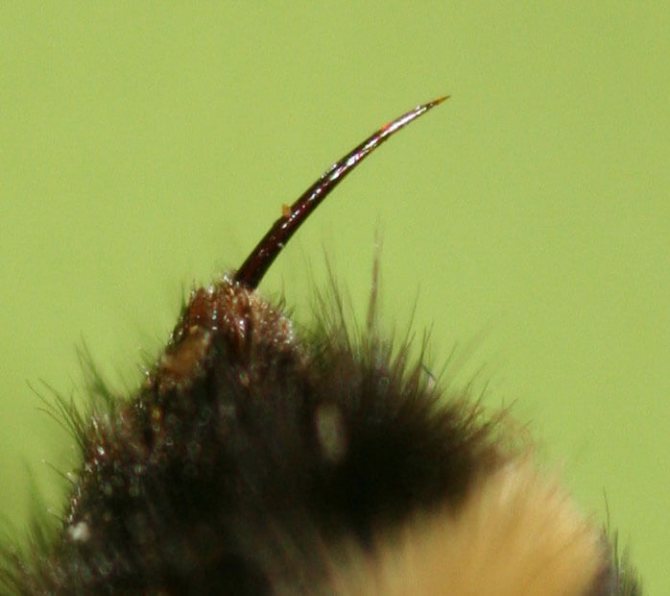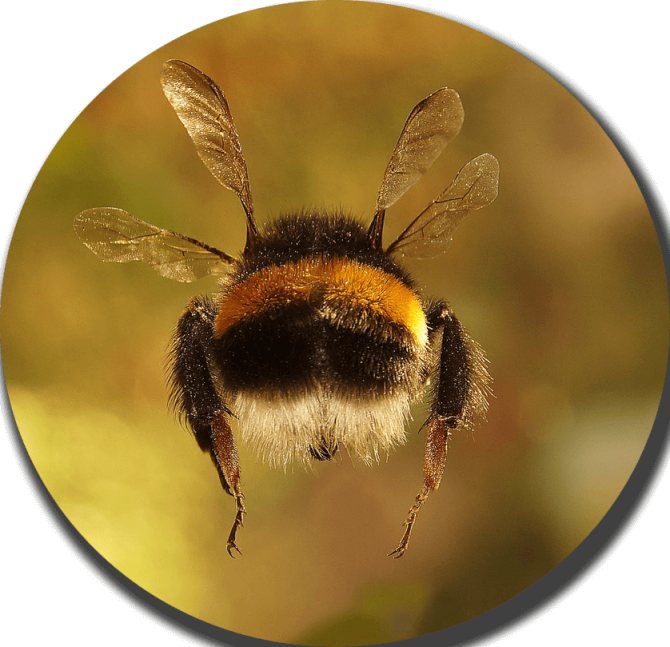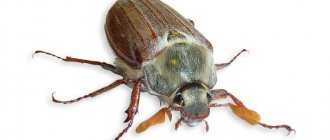- Wild animals
- >>
- Insects
Bumblebee - the most peaceful, almost harmless representative of the bee family. It is a rather large insect with a very beautiful, memorable color. The animal received its unusual name for a reason. It comes from the Old Russian word "chmel", which meant "hum, wheeze." This is how you can characterize the sounds that are emitted by insects.
Differences by gender.
Females have a more elongated, rounded head shape. Males are round, sometimes triangular, with a dotted line on the top of the head on the left. In females, the mandibles are strongly curved and overlap during closure. The upper lip is rectangular in shape.
The oral apparatus of males is much more powerful, it allows you to bite the blades of grass and their stems. Individuals males and females also have minor differences in sternites. Females have no ridge on the sixth, males have no characteristic elevation on the second.
Males have no sting, in the place of which the genitals are located. In females, it is located at the end of the abdomen. Has no gaps like a bee. This allows you to safely remove it for reuse. The male genitals are hidden under the chitinous cover, which has a brown tint. There are no special compartments for collecting pollen on the hind legs of males.
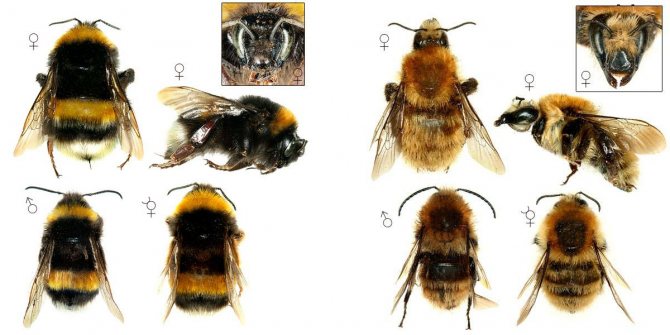
Bumblebee is incredibly useful, without it, the harvest is almost impossible. After all, only this insect is able to pollinate clover, bees cannot do this. Bumblebees have their nests both above and below the ground. The second option is often located in an abandoned rodent habitat. Here bumblebees find remnants of wool, dry grass, which are used to warm the home.
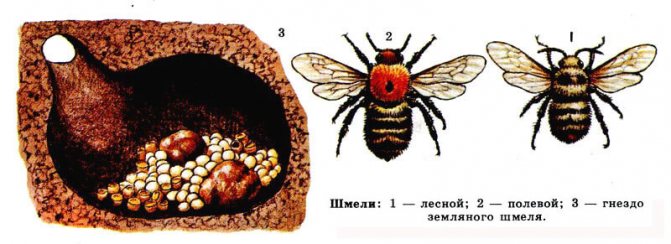

Above the ground, nests are often arranged in a hollow or in a birdhouse. With the help of wax secreted by special glands on the abdomen, the dwelling is protected from moisture. This material also strengthens and masks the house from prying eyes.
Before departure, bumblebees perform a kind of charging, accompanied by a characteristic buzzing. Previously, scientists perceived it as the sound of the nest ventilation process. With the help of such "exercises" bees significantly increase their body temperature.
The bumblebee is social like bees. The responsibilities of their family are strictly distributed. The family includes a uterus (large fertile female), males, sterile working females. Basically, the whole process of forming a nest and collecting honey falls on the workers. The number of such "workers" in the largest nests can be up to two hundred individuals.
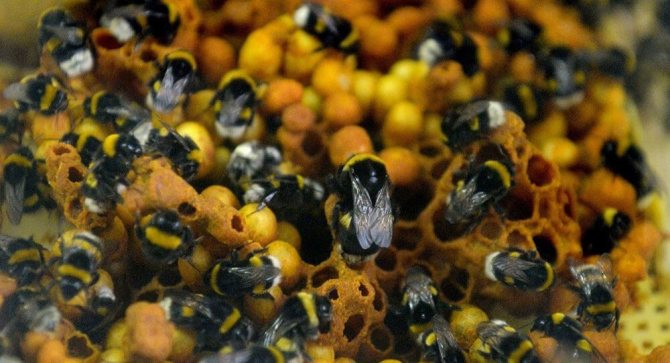

The uterus is engaged in regular reproduction of offspring and feeding the first larvae born. Working females look after further offspring. The larvae are fed with mixed pollen with honey. By the way, adult bumblebees refuse the obtained delicacy. Males who fertilized the uterus fly away from the nest, so that they will never return. The fertilization process always takes place in the fall. However, the species that exist in the tropics breed throughout the year.
Bumblebee honey is different from bee honey more liquid, lighter color. They are also distinguished by their aroma and sweetnesswhich bees are more pronounced... Reproduction and life cycle.
The bumblebee begins its life as an egg in the spring. In the nest built by its own paws, the uterus lays 8-16 eggs.For its construction, the female ends wintering earlier than the others. By about the 6th day, the larva hatches from the egg. In the next 2 weeks, their children will be fed by the uterus itself. Further, in the third stage, the larva turns into a pupa. A little more than 2 weeks later, the bumblebee gnaws through the cocoon.
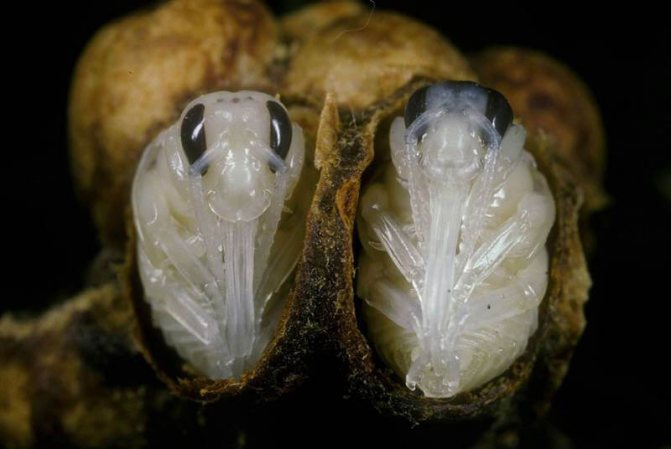

Subsequently, honey and extracted nectar will be stored in them. Within a month, newly born bumblebees are able to procure the necessary building materials and food on their own. From this moment on, the uterus does not leave the nest. Males live the whole season, living until autumn, when a new uterus is fertilized.
Working females live no more than 2 weeks. The only exception is the uterus - it hibernates.
This video follows the life of a single uterus from spring to autumn, from her birth to her death.
Types of bumblebees. The main differences between bumblebees are their color, size and habitat. In total, there are about 3 hundred different species. The main ones are presented below.
The nature and lifestyle of the bumblebee
Bumblebee has a rather docile character. He behaves calmly in his community. There is no competition between these insects. Scientists have found that it is bumblebees that have intelligence. They can calmly be near a person.


According to photo, bumblebees - insects, who constantly do what they do, pollinate flowers, so they are not at all interested in a person. They don't have the habit of stinging. A bumblebee can only bite if it senses a real danger.
If disturbed, he would rather just fly off the flower than try to sting. But if the bumblebee bites, then the person will be in trouble. Often, such bites lead to allergies and fever. But this does not last long. Bumblebee venom is not strong. Bumblebee bite only children should be afraid. They usually develop severe itching and redness at the site of the bite.
Aerodynamic performance
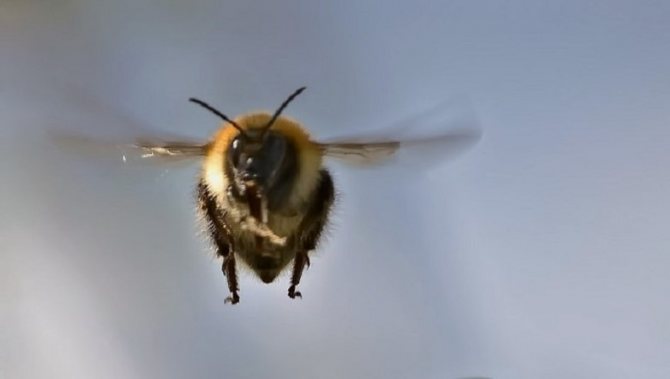

Bumblebee in flight
For a long time it was believed that bumblebees can fly contrary to the laws of physics. Indeed, a massive body carried on one pair of small wings is a rather unusual sight. However, physicist Jane Wang from the US University was able to prove that there is nothing surprising in the flight of a bumblebee.
The scientist simulated the passage of dense streams of wind through the moving wings of an insect for several hours and found that this process is fully consistent with the laws of physics.
Insect benefits
It is difficult to overestimate the importance of having a garden bumblebee in a garden or vegetable garden. He is a pollinator of many plants.
Thanks to his hard work and high productivity, the harvest on the site will always delight the summer resident. Therefore, in no case should you try to get rid of bumblebee nests next to a vegetable garden or garden.
The presence of a bumblebee family in a certain territory provides for the absence of wasps in the same place, which tend to bother a person. The garden bumblebees themselves do not feel any interest in a person and will try to avoid close contact with him.
Features of public life
Just like bees, bumblebees are social insects. They organize huge families of up to 200 individuals.
In such communities where bumblebees live, there is a surprisingly clear distribution of responsibilities for absolutely each of its members.
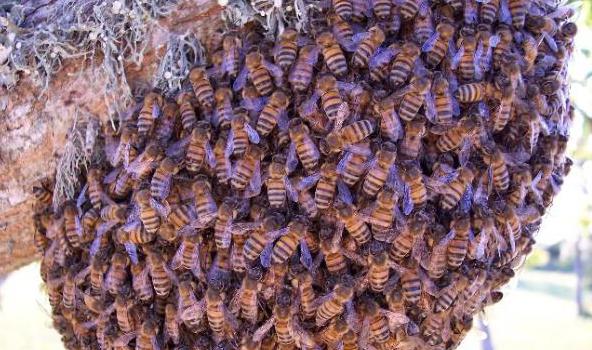

Under natural conditions, the female, as a rule, lays 200-400 eggs to hatch working individuals, then she begins to lay eggs, from which females and males develop.
Many species have so-called small queens (this is the average between queens and workers). The latter, together with workers and small queens, build nests, collect honey and pollen (food) and lay unfertilized eggs, from which only males develop. And from the very last eggs laid by the uterus, new queens are hatched, which, in turn, are fertilized by males.
Only old queens remain for wintering, as old ones die, males, workers and small queens also die. The entire community is scattered.
Origin of the species
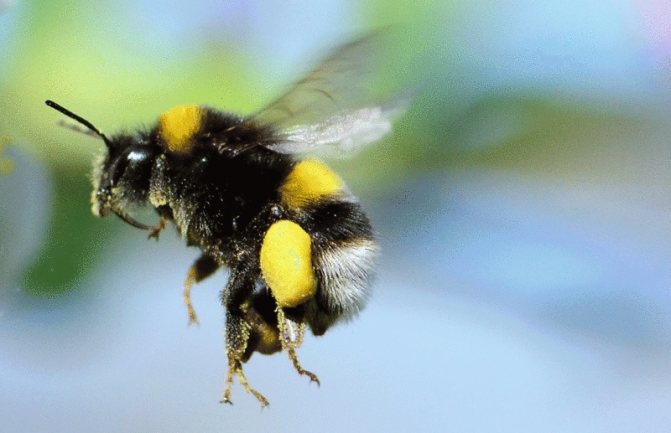

The first species of bumblebees appeared millions of years ago
Scientists believe that bumblebees appeared about 30 million years ago, during the Oligocene. But the found remains of insects of that time are poorly preserved, and the data obtained during the study is not enough to prove their belonging to this species.
Interesting fact: Most insects of the past are studied from the species found in tree resin. But bumblebees, due to their large size, do not fit in a drop of sticky substance, so meeting their fossils is a great success.
The oldest remains of insects, which definitely belong to bumblebees, date back to the Miocene, and they are about 20 million years old. It is believed that this type of bee appeared on the territory of Asia, from where it gradually migrated to Europe. After some time, he reached America.
Over the past two centuries, a dozen remains of bumblebees have been discovered, which are from 10 to 20 million years old. Moreover, the finds were made all over the world, on different continents.
Breeding bumblebees at home
People have long understood that the bumblebee is one of the best greenhouse pollinators and it is its presence that enhances the quality of the fruit. Plus, having an agreeable character, bumblebee bite - a rare event.
In order to breed these insects, it is necessary to purchase at least 50 individuals that are members of one society. For them, you need to build or buy special hives in which the female will breed offspring. Before wintering, the uterus needs to be well fed so that it will survive this time well and breed new offspring.
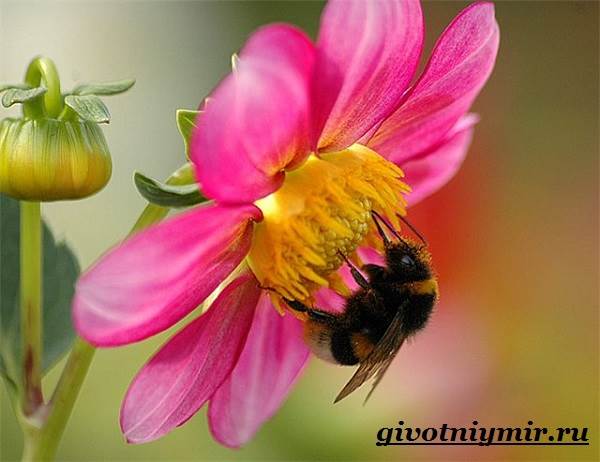

Bumblebees are much easier to breed than bees, and much more profitable. Buy bumblebees can be found on the Internet from any breeder. If you are wondering how to get rid of bumblebees, then most likely they are seriously harming you! In order to get rid of them, it is enough to find their nest and lower them into a basin or bucket. Insects in the water will quickly die!
Socket device
Bumblebee wax melts at + 25 ° C, as it contains dihydric alcohols and double bond compounds. Liquid honey produced from nectar contains a lot of moisture, especially in the species Bombus Agrorum.
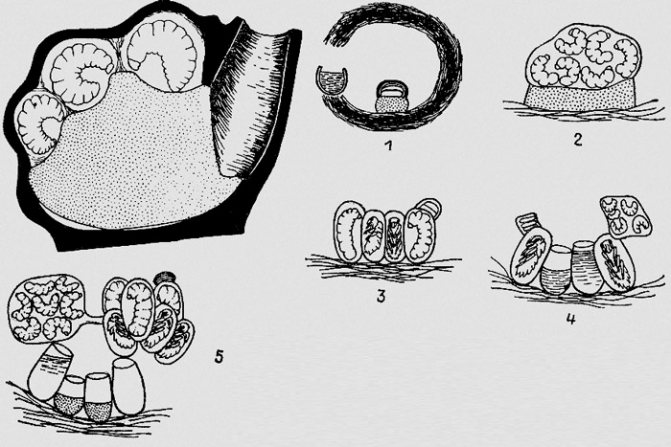

Bumblebee larval
How the nest develops:
- Spring - one uterus, one cell with brood and pollen. Above shows its diagram.
- After 10-17 days, the cell will be lined with silk from the inside. The wax is scraped off, and the larval house is completed.
Each cell after brood emergence contains 3-5 separate containers.
The founder of the colony does not produce honey, but she collects pollen. By August, the nest consists of many cells, but each of them was originally a hopper house.
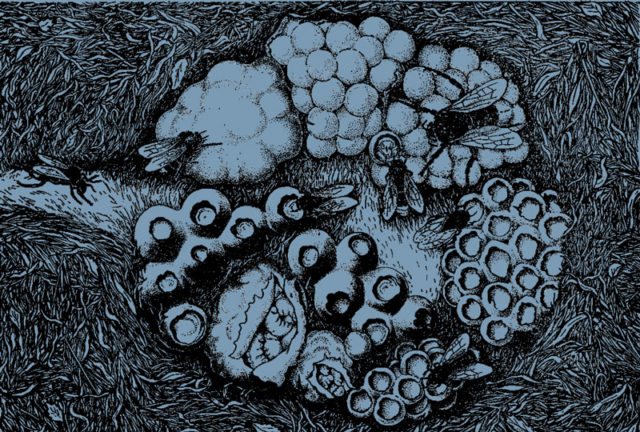

Rodent nest in the burrow
What the drawing displays:
- The queen is on cocoons and warms them (top right).
- Pollen cocoons can be seen below and to the right.
- Near the entrance and in the center - honey pots.
- Nest contains 5 larvae at different stages of development.
As cocoons grow, wax envelops them. Bumblebees spend their wax sparingly, and they need honey only in case of bad weather.
Bumblebee feeding and breeding
Bumblebees can feed on any nectar. The process of eating itself takes a whole day. For a while, bumblebees carry nectar to their queen. Oddly enough, they love to sit on bright flowers, although they can calmly manage even with tree sap. In the process of feeding, bumblebees distribute seeds. Almost all the clover that grows is their merit. By the way, clover is the insect's favorite treat.
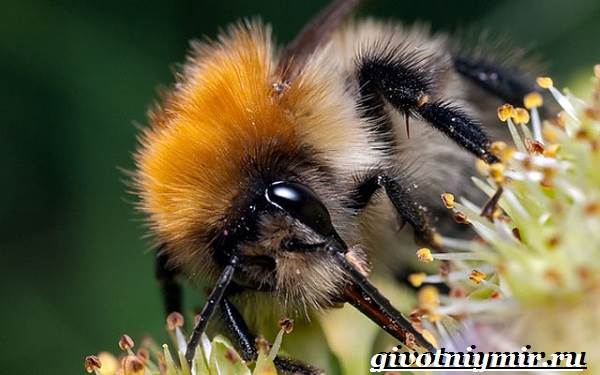

Bumblebees breed by laying eggs. For this, in every society there are several females - queens, who are engaged in this difficult task. They never fly out for pollination. Usually, after the working bumblebees have built the combs, the female begins to ennoble the nest with the remains of wax and nectar.
After that, the laying begins with a calm soul. Afterwards, the queens watch as the larvae hatch. The whole society carries food to the nest. After the larvae become, the female will stop watching them. In a month, the old females will most likely die and the young ones will come to replace them. Thus, the population of bumblebees does not go beyond the laws of fauna and they always have food.
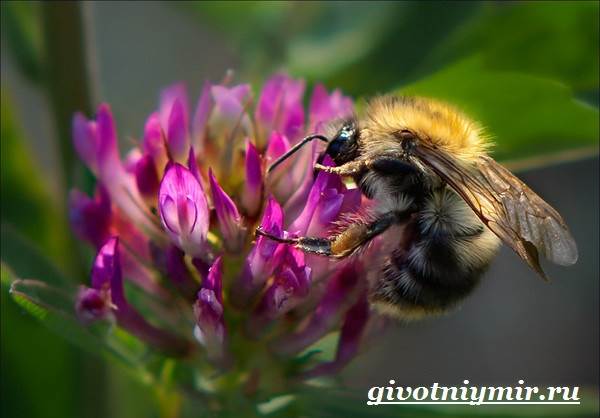

Description
Bumblebees belong to the class of winged arthropod insects and are a type of bee. The original genus name in Latin is “Bombus”. Creatures are widespread on Earth, live in all corners of the planet, where there are suitable conditions for living. Now zoologists know about 300 different species of insect, which belong to fifty subspecies.
The most common are two types of bumblebees: Bombus terrestris and Bombus lapidarius. They are found in most countries.
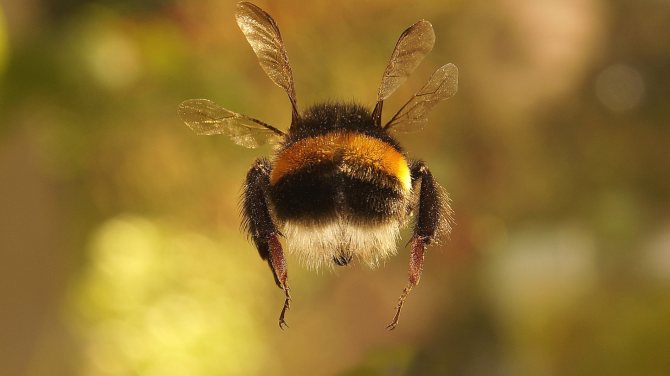

Bumblebee back view
You can distinguish the bumblebee from the rest of the bees by its large size and rounded contours of the body. Thanks to the hairs on the body, they adapt well to cold climates and do not freeze. They are also considered warm-blooded insects. When moving quickly, their body begins to generate heat, and the internal temperature can reach forty degrees.
People have a stereotype that a bumblebee bite is very painful, and in general it is better to beware of an insect. Such fears arose due to the large size of the creature and powerful jaws. However, in fact, this type of bee is the most peaceful and harmless.
Interesting fact: the sting of the bumblebee is smooth and not chipped, unlike the bee's. If in the latter it remains in the victim, then the bumblebee, having made a bite, can pull it back into the body and fly away.
Bumblebees never attack first. They do not use their jaws as weapons, despite their power, and their only defense is their sting. But an individual will use it if there is no other way out. Moreover, only females and insects that build a hive have it. Ordinary males have no sting and are almost completely defenseless. In nature, the bumblebee is of great benefit by pollinating a large number of flowers.
Interesting:
Edible and inedible plants in the forest

